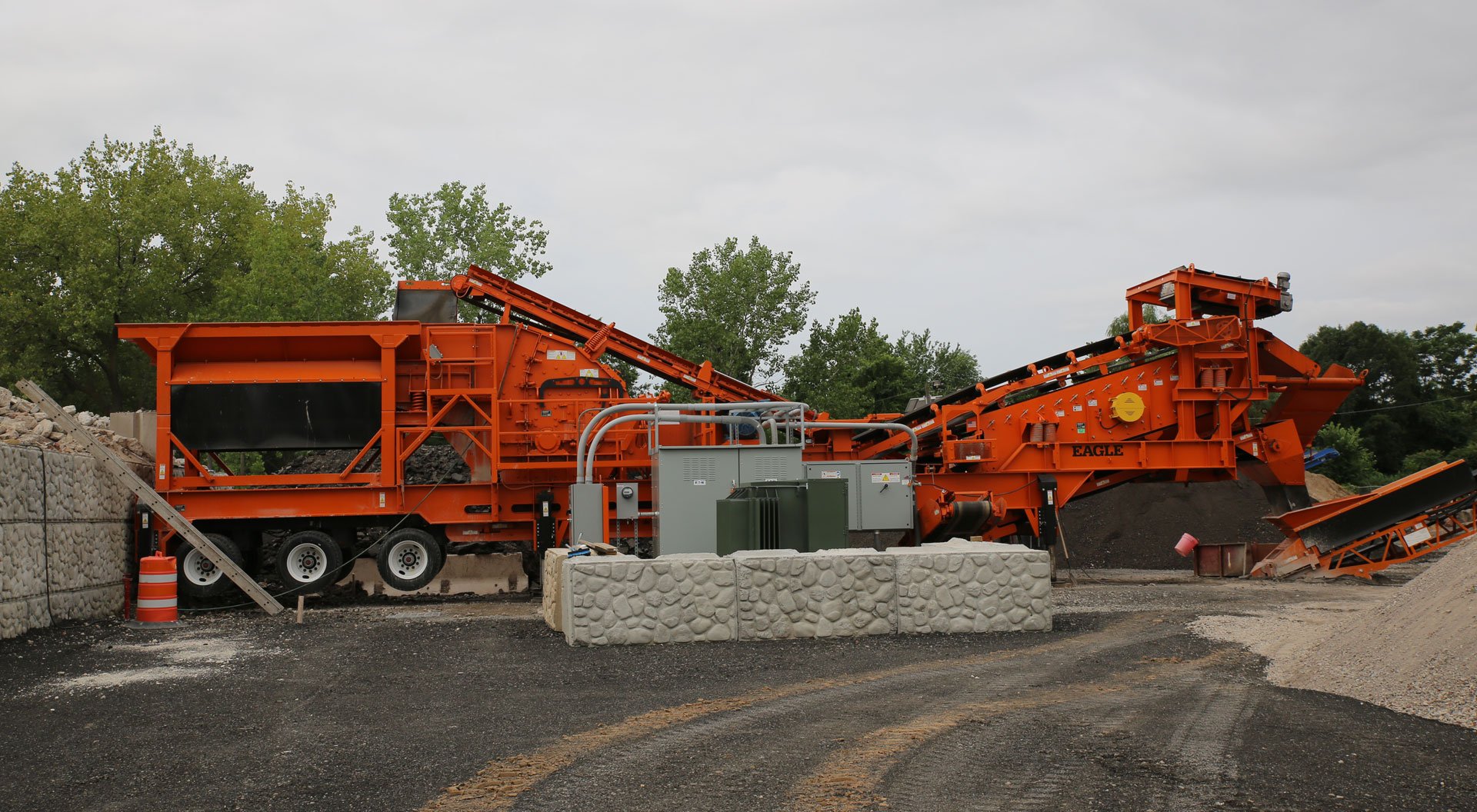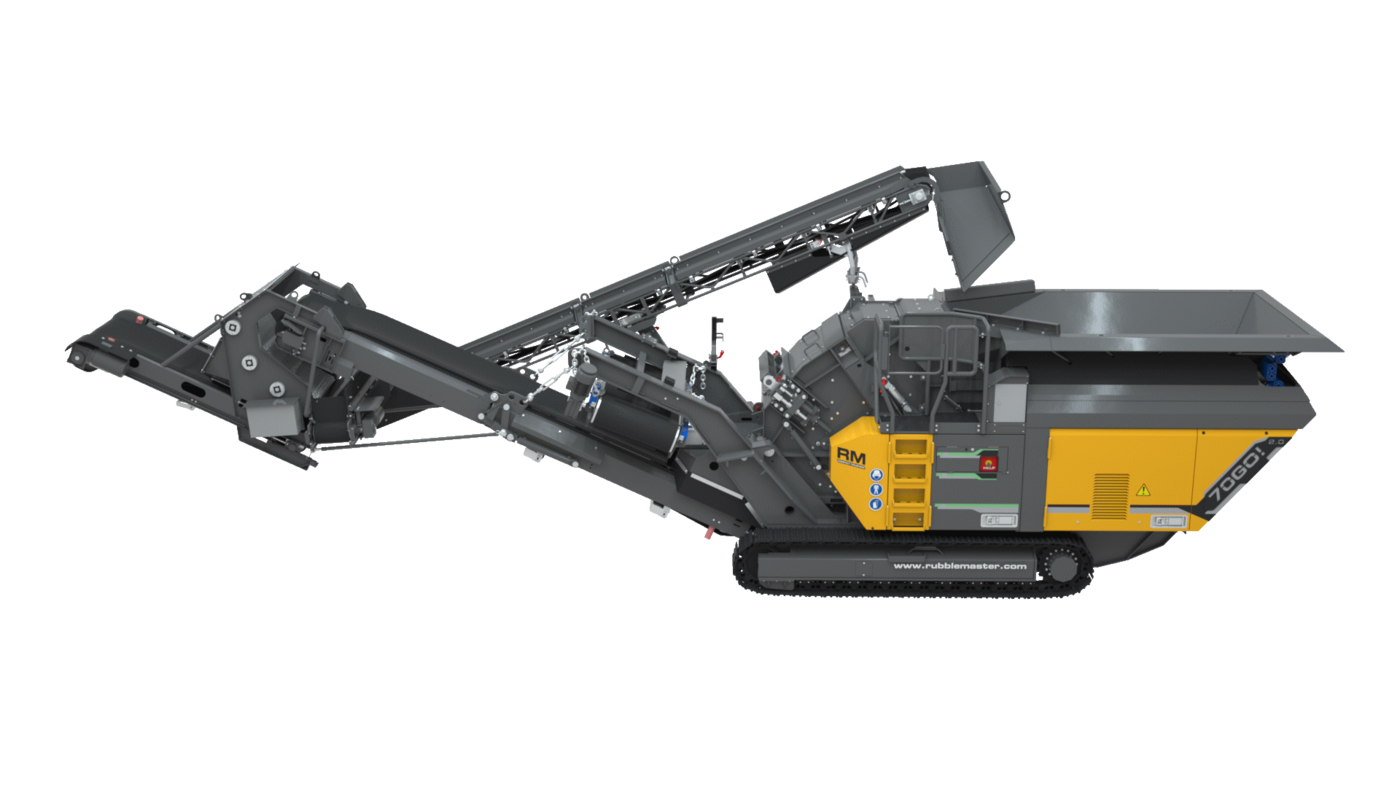From Demolition to Building And Construction: Discovering the Convenience of Concrete Crusher for Sale
Optimizing Sustainability: The Function of Concrete Crushers in Recycling
Concrete waste is a prevalent ecological concern, with the building and construction industry being just one of the largest contributors to international carbon discharges. Nonetheless, in the middle of this difficulty lies an encouraging service: the duty of concrete crushers in reusing. These cutting-edge equipments have arised as an essential gamer in maximizing sustainability by transforming thrown out concrete right into valuable resources. By taking advantage of the power of sophisticated technology, concrete crushers provide a myriad of advantages that not just lower waste but likewise save all-natural sources and minimize the environmental impact of building jobs. In this conversation, we will certainly explore how concrete crushers work, highlight the advantages of reusing concrete, display successful case researches, and provide a peek into the future of this progressing area. Join us as we unwind the untapped potential of concrete crushers, and discover the path towards a greener and more sustainable future.
The Environmental Impact of Concrete Waste
The environmental influence of concrete waste is a considerable issue in the world of reusing and sustainable construction techniques. Concrete is one of the most commonly used building products due to its stamina and longevity.
The disposal of concrete waste likewise poses environmental difficulties. When concrete is knocked down or removed from building sites, it is usually sent to garbage dumps, occupying beneficial area and creating greenhouse gas discharges as it decays. The incorrect disposal of concrete waste can infect dirt and water resources, influencing ecosystems and human health.
Concrete crushers play a vital duty in this procedure by damaging down concrete waste right into smaller, reusable particles. Reusing concrete waste not just saves natural sources however also lowers carbon exhausts connected with concrete manufacturing.
How Concrete Crushers Work
Concrete crushers are effective equipments designed to damage down concrete waste into smaller sized particles for reusing purposes. These makers make use of hydraulic pressure and huge jaws to exert pressure on concrete waste, squashing it into smaller sized pieces that can be recycled as aggregates in new construction jobs.
The procedure of how concrete crushers function begins with the feeding of the concrete waste into the crusher's receptacle. The receptacle, which is typically outfitted with a vibrating feeder, ensures a consistent and also flow of material right into the crusher.
Once inside the crusher, the concrete waste is subjected to the squashing action of the maker's jaws. These jaws, which are generally constructed from resilient and strong products like manganese steel, exert significant force on the concrete waste, damaging it down into smaller sized, a lot more manageable items.
The smashed concrete waste then passes via a series of displays or filters, which sort the accumulation by size (concrete crusher for sale). This permits the separation of bigger items that might require more squashing from smaller sized, ready-to-use accumulations

Benefits of Recycling Concrete With Crushers
Reusing concrete waste with the help of crushers uses many advantages in the direction of lasting construction practices and resource conservation. Among the vital benefits of recycling concrete is that it helps in reducing the demand for brand-new construction materials. By using smashed concrete as an alternative for natural aggregates, such as crushed rock and sand, we can reduce the demand for quarrying and mining activities. This, subsequently, assists save all-natural sources and decreases the environmental influence related to drawing out and processing virgin materials.
An additional considerable benefit of reusing concrete is the reduction in garbage dump waste. Concrete waste takes up a considerable quantity of space in land fills, and its disposal can add to air pollution and greenhouse gas discharges. concrete crusher for sale. By reusing concrete, we can divert this waste from land fills and reduce the pressure on these already restricted resources. In addition, recycling concrete can aid minimize transportation expenses and carbon emissions related to transporting waste material to land fills.
In addition, using recycled concrete can lead to set you back financial savings in building and construction tasks. Squashed concrete is usually less costly than utilizing new materials, making it great post to read an eye-catching choice for specialists and developers. Moreover, reusing concrete can likewise contribute to LEED (Leadership in Power and Environmental Design) accreditation, which is an extensively recognized standard for sustainable building techniques.
Study: Effective Concrete Recycling Projects
Several significant study exemplify the success of concrete recycling projects in different building and facilities growths. One such instance study is the Central Artery/Tunnel Job, likewise referred to as the "Big Dig," in Boston, Massachusetts. The job included the building and construction of a new underground freeway system, which called for the demolition of existing concrete structures. By carrying out a concrete crusher on-site, the task was able to recycle and recycle around 98% of the knocked down concrete, resulting in considerable price financial savings and minimized environmental impact.
One more successful situation study is the Sydney City Northwest job in Australia. This major infrastructure growth included the building of a new city rail line. To lower the job's carbon footprint and advertise sustainability, concrete crushers were utilized to recycle the knocked down concrete from old buildings and structures. This technique not just conserved land fill area however also caused significant product financial savings and minimized transportation costs.
In addition, the Los Angeles International Airport (LAX) development task incorporated concrete recycling as a vital part of its sustainability initiatives. By using crushers to process and reuse the demolished concrete, the job had the ability to draw away thousands of lots of waste from garbage dumps and reduce the demand for virgin aggregate. This not just minimized environmental influence but likewise aided the project attain LEED accreditation.
These instance research studies demonstrate the performance of concrete crushers in taking full advantage of sustainability and advertising the circular economic situation in building and framework tasks. By accepting concrete recycling, developers can minimize waste, conserve resources, and add to a more lasting future.
Future Technologies in Concrete Crushing Innovation

One of the future technologies in concrete crushing modern technology is the development of robotic crushers. These crushers will certainly be geared up with advanced sensors and synthetic knowledge abilities, enabling them to autonomously identify and divide various materials in demolished concrete. This will significantly lower the demand for hands-on sorting, saving time and sources.
One more area of technology is using sophisticated crushing techniques that can remove a higher percentage of aggregates from demolished concrete. Presently, a substantial amount of aggregates are shed throughout the squashing procedure. With the development of brand-new squashing modern technologies, it is anticipated that the healing price of aggregates will increase, leading to an extra efficient and sustainable recycling process.
Additionally, scientists are checking out the use of useful reference alternative power sources to power concrete crushers. By making use of renewable resource, such as solar or wind power, the carbon footprint of the crushing process can be more minimized, adding to a greener and more sustainable building and construction industry.
Final Thought
In conclusion, concrete crushers play an essential duty in taking full advantage of sustainability via the recycling of concrete waste. By reducing the environmental influence of concrete waste and promoting the reuse of Learn More Here materials, crushers add to an extra sustainable building and construction industry. The benefits of reusing concrete with crushers are various, consisting of conservation of sources, decrease of land fill area, and reduced carbon exhausts. With future developments in concrete squashing modern technology, the potential for also better sustainability in the industry is promising.
Concrete crushers play a crucial role in this process by damaging down concrete waste right into smaller sized, reusable particles. Recycling concrete waste not only saves natural resources however additionally decreases carbon exhausts linked with concrete production.
By carrying out a concrete crusher on-site, the task was able to reuse and reuse roughly 98% of the knocked down concrete, resulting in significant cost financial savings and reduced ecological influence.
To reduce the project's carbon footprint and promote sustainability, concrete crushers were utilized to recycle the knocked down concrete from old structures and structures (concrete crusher for sale).In conclusion, concrete crushers play a critical function in taking full advantage of sustainability via the recycling of concrete waste